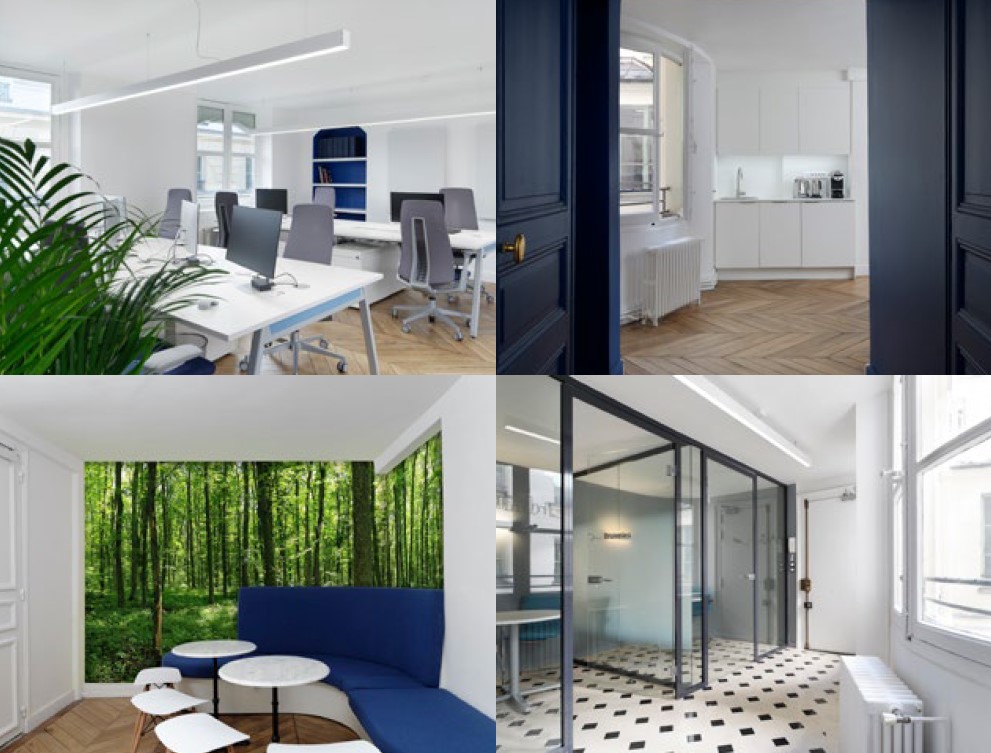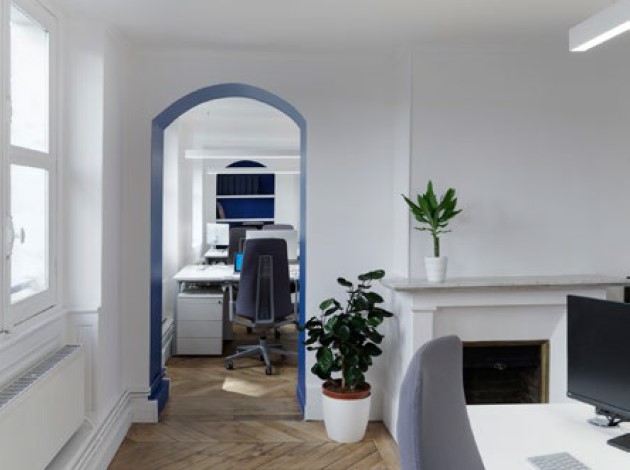Sustainability in design: a corporate buzzword or the future of commercial property
Contents |
[edit] Introduction
There is no escaping the fact that sustainability has well and truly found itself a seat at the boardroom table. Even prior to the events of 2020, clients presented briefs that centred around a project’s carbon footprint – but is the notion of sustainability a longstanding principle that is here to stay or just another corporate buzzword?
The architecture and construction sectors are not alone in their bid to minimise humanity’s impact on the environment, but we are perfectly positioned to play a part in creating a sustainable future for generations to come – with efficiency and moderation in the supply chain, use of materials and even employees all proving central to its success.
Client ambitions, budgets and timescales all have a considerable effect on just how sustainable an end product can be. It is the collective responsibility of all who operate in the built environment to be that ‘critical friend’ and challenge a brief if there is a way to make a project more sustainable – at any stage.
Our initial thoughts may skip to building information modelling (BIM) as the obvious solution, thanks to its ability to gather data throughout the project lifecycle – enabling faster, safer, less wasteful construction. This, coupled with more cost-effective and sustainable operations and maintenance, is a great place to start, but our attentions should not end there.
In fact, by empowering colleagues to strive for the creation of a development which not only creates a better future for the client, the building and its occupants, we protect the future of our planet too. While a new build might be on the cards for a long-standing customer, is there a case to consider the refurbishment of a nearby site – or the potential to breathe new life into a dilapidated area, encouraging socio-economic growth in the process?
[edit] Sustainable supply chain in construction
With the best will in the world, the ability to develop a sustainable design solution is only ever going to be as ‘open’ as those which are setting the brief, outlining the budget and making the final decisions. That is why rather than adding such a sentiment as a ‘nice to have’, there should be a sustainability target set at the very start – with all parties bought into the strategy and rationale behind it.
That is in an ideal world. A great place to start is by making the case to source materials and labour responsibly – and preferably, locally. Negating the requirement to ship supplies across vast oceans in a bid to keep costs down will help to reduce the emissions associated with ‘getting’ the infrastructure to site, but also means any product issues can be rectified quickly too.
With a vast pool of sub-contractors to choose from – in most locations – it pays to be picky. As well as sourcing endorsement from ‘happy customers’, look for proven eco credentials too, particularly when it comes to recycling, travel and the firm’s own procurement.
Naturally, there will always be cases where a development is driven entirely by budget and ambition – rather than longer-term implications of the design – or when it is simply impossible to procure goods in any other fashion.
But even if you are surrounded by people for whom ethical construction sits at the very bottom of the pile, it is still possible to make a difference. Examine your own carbon footprint, implement change if necessary and be sure to highlight your own ‘green credentials’ as part of any bids.
[edit] Sustainability is about more than bricks and mortar
When considering sustainability within the built environment, it is important to look beyond the physical elements of construction. If the COVID-19 pandemic has taught us anything, it is that organisations need to be creating commercial spaces that fit the bill in terms of function, form and wellbeing.
From the rise in experiential retail and socially distanced al fresco dining, to the creation of ‘COVID-safe’ offices, the ambition to curate holistic design is on the up – and nowhere more prominently than within the office environment.
While an overnight shift to homeworking gave the commercial landscape a complete shake-up, it has forced employees to consider what they want from their career too – as well as where they want their workspace to be.
As some brands close satellite offices in favour of one central hub, others are adopting more of a hybrid/ co-working approach, with workers given the freedom to select their hours and desk locations – and in turn, their work-life balance.
Although it is not an approach which suits every corporate entity, many organisations have woken up to the need to offer sustainable solutions not just in the bricks-and-mortar sense, but via the attitudes and environment they offer colleagues.
Flexible and remote working is here to stay, and the requirement to create a workspace that answers the needs of all who use it – be that retail, hospitality or office staff – is firmly at the top of many priority lists. Fast forward to 2021, and in their place are locations which support hybrid working and wellness – with hot desking, ‘breakout’ zones and open-plan leisure areas.
[edit] Building sustainability into your HR and operational strategies
Including a nod to sustainability in your company’s value proposition should hopefully be a given, but bringing those to life rests solely on the shoulders of the people who live and breathe them. Therefore, building your recruitment strategy around a desire to collaborate with those who share your way of thinking is key.
By sourcing talent that truly embraces the opportunity to push the envelope, while challenging clients to genuinely think about the way they intend to use a space, it is possible to start bringing about meaningful change.
Simply recruiting someone based on their ‘green’ interests is not where investment should start and end though. Offering continued training around what it means to be sustainable to colleagues – perhaps through CPD-accredited courses – will pay dividends in the long run.
Paper-free offices are nothing new, but technology allowed many architecture, design and construction firms to maintain some semblance of ‘business as usual’ during the height of the pandemic.
Switching lengthy proposal documents for concise PDFs, embracing 360-degree photographic reports and implementing virtual walkthroughs and handovers are all solutions that are here to stay. And to take that one step further in terms of operations, consider the potential of using green power to heat offices and reducing non-essential travel, and offsetting the environmental cost of commuting – both in-country and overseas. This can be done via initiatives which help to plant trees across the globe – such as TravelPerk – alongside a sustainability ‘code of conduct’ to ensure everyone upholds company commitments.
Of course, as a global population – never mind industry – we still have a long way to go. But as the people behind buildings which might outlive us all, it is our responsibility to create them with the future firmly in mind.
This article originally appeared in the Architectural Technology Journal (at) issue 138 published by CIAT in summer 2021. It was written by Neil Coales, founder, Agilité Solutions.
--CIAT
[edit] Related articles
Featured articles and news
One of the most impressive Victorian architects. Book review.
RTPI leader to become new CIOB Chief Executive Officer
Dr Victoria Hills MRTPI, FICE to take over after Caroline Gumble’s departure.
Social and affordable housing, a long term plan for delivery
The “Delivering a Decade of Renewal for Social and Affordable Housing” strategy sets out future path.
A change to adoptive architecture
Effects of global weather warming on architectural detailing, material choice and human interaction.
The proposed publicly owned and backed subsidiary of Homes England, to facilitate new homes.
How big is the problem and what can we do to mitigate the effects?
Overheating guidance and tools for building designers
A number of cool guides to help with the heat.
The UK's Modern Industrial Strategy: A 10 year plan
Previous consultation criticism, current key elements and general support with some persisting reservations.
Building Safety Regulator reforms
New roles, new staff and a new fast track service pave the way for a single construction regulator.
Architectural Technologist CPDs and Communications
CIAT CPD… and how you can do it!
Cooling centres and cool spaces
Managing extreme heat in cities by directing the public to places for heat stress relief and water sources.
Winter gardens: A brief history and warm variations
Extending the season with glass in different forms and terms.
Restoring Great Yarmouth's Winter Gardens
Transforming one of the least sustainable constructions imaginable.
Construction Skills Mission Board launch sector drive
Newly formed government and industry collaboration set strategy for recruiting an additional 100,000 construction workers a year.
New Architects Code comes into effect in September 2025
ARB Architects Code of Conduct and Practice available with ongoing consultation regarding guidance.
Welsh Skills Body (Medr) launches ambitious plan
The new skills body brings together funding and regulation of tertiary education and research for the devolved nation.
Paul Gandy FCIOB announced as next CIOB President
Former Tilbury Douglas CEO takes helm.

























